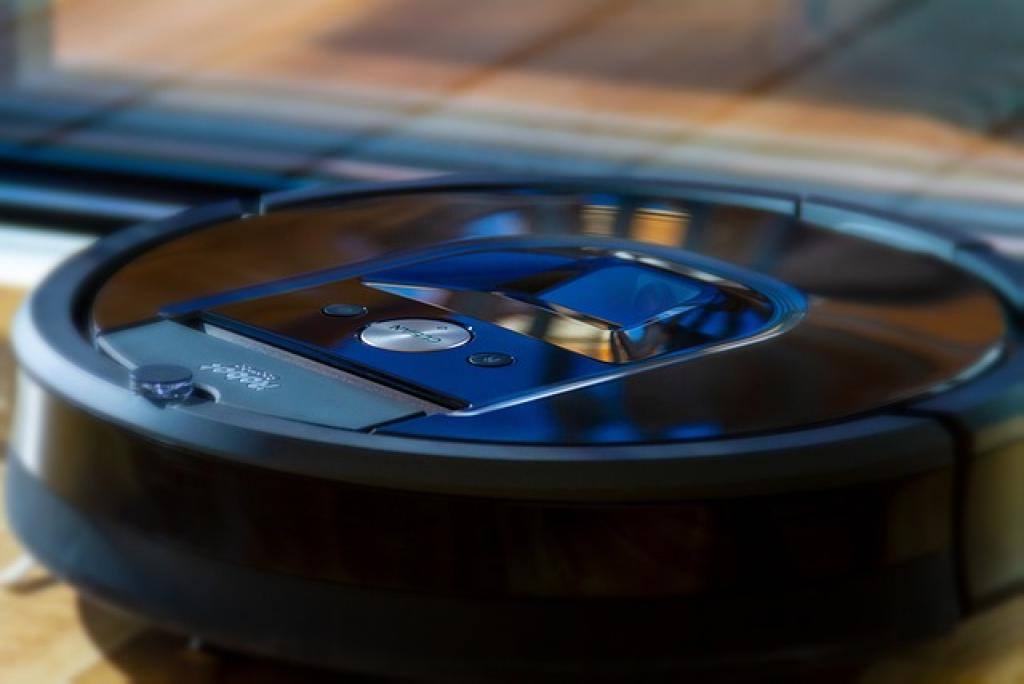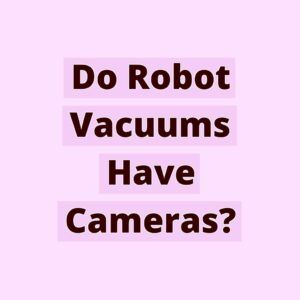Welcome to our blog post on the intriguing topic of whether robot vacuums have cameras. In this article, we will delve into the world of smart home technology and explore the truth behind the existence of cameras in these nifty cleaning gadgets.
If you’re a proud owner of a robot vacuum or considering getting one, you might be wondering if these devices are silently spying on you. Are they equipped with hidden cameras, capturing your every move? Or are these concerns simply a product of our imagination?
Throughout this blog post, we will address these questions and provide you with a comprehensive understanding of the technology behind robot vacuums. We’ll discuss the features and functionalities of these devices, examining whether cameras are a common component or merely a rare occurrence.
Additionally, we’ll explore the benefits and potential privacy implications of having a camera-equipped robot vacuum in your home. We’ll weigh the pros and cons, discussing how companies handle data collection and privacy concerns.
So, if you’re curious about the presence of cameras in robot vacuums and the impact they might have on your privacy, keep reading. We’ll shed light on this intriguing topic and help you make an informed decision about incorporating smart home technology into your cleaning routine.
How Do Robot Vacuums Navigate Without Cameras?
Robot vacuums have become a popular addition to many households, offering convenience and efficiency in keeping our floors clean. However, concerns about privacy and surveillance often arise when considering the use of these devices. One question that frequently comes to mind is whether robot vacuums are equipped with cameras.
While some advanced robot vacuums do come with cameras, many models rely on alternative navigation technologies that do not involve visual sensors. These smart devices utilize a combination of sensors, such as infrared, ultrasonic, and laser sensors, to map and navigate your home. These sensors allow the robot vacuum to detect obstacles, avoid collisions, and efficiently clean your floors.
By utilizing these non-visual sensors, robot vacuums are able to navigate and clean your home effectively without the need for cameras. This not only addresses privacy concerns but also ensures that the vacuum can function in various lighting conditions, including low-light environments.
However, it’s important to note that while robot vacuums without cameras may provide peace of mind when it comes to privacy, they may have limitations in terms of mapping and navigation accuracy. Some models may struggle with complex floor plans or be less efficient in identifying and cleaning specific areas. This is where camera-equipped robot vacuums may have an advantage, as they can provide a more precise mapping of your home and offer advanced features like targeted spot cleaning.
In conclusion, while some robot vacuums do come with cameras, many models are designed to navigate and clean your home effectively without visual sensors. The choice of whether to opt for a camera-equipped or camera-free robot vacuum ultimately depends on your personal preferences and privacy concerns. In the following sections, we will further explore the potential privacy implications of camera-equipped robot vacuums and provide tips on how to protect your privacy if you choose to use one. So, keep reading to gain a comprehensive understanding of this topic and make an informed decision about incorporating smart home technology into your cleaning routine.
Can Robot Vacuums Detect Obstacles Without Cameras?
Yes, robot vacuums can detect obstacles without the use of cameras. They are equipped with a variety of sensors that enable them to navigate around furniture, walls, and other objects in your home.
One common type of sensor used in robot vacuums is the infrared sensor. These sensors emit infrared light and measure the reflection to detect obstacles in their path. They work by sending out a beam of light and measuring the time it takes for the light to bounce back.
Another type of sensor is the ultrasonic sensor. These sensors emit high-frequency sound waves and measure the time it takes for the sound waves to bounce back. By analyzing the time it takes for the sound waves to return, the robot vacuum can determine the distance to an obstacle and navigate accordingly.
Laser sensors are also widely used in robot vacuums for obstacle detection. These sensors emit laser beams and measure the reflection to create a detailed map of the surroundings. By analyzing the reflected laser beams, the robot vacuum can detect obstacles and navigate around them.
These sensors work together to provide accurate obstacle detection and navigation for robot vacuums, ensuring that they can effectively clean your home without getting stuck or damaging furniture.

What Are the Privacy Concerns with Robot Vacuums and Cameras?
Robot vacuums equipped with cameras raise privacy concerns as they have the potential to capture and transmit visual data from inside your home. This can be worrisome for individuals who value their privacy and are concerned about the potential misuse or unauthorized access to their personal spaces.
One of the primary concerns is the possibility of unauthorized surveillance. With a camera-equipped robot vacuum, there is the risk that the device could be hacked or compromised, allowing someone to remotely access the live feed or stored video footage of your home. This invasion of privacy can be unsettling and raise questions about the security of your personal space.
Furthermore, the presence of a camera in a robot vacuum also raises questions about data storage and data security. If the vacuum is equipped with onboard storage or connects to a cloud service, there is a possibility that video recordings or images of your home could be stored and potentially accessed by third parties. This can lead to concerns about the safety and privacy of your personal data.
Another aspect to consider is the potential for unintentional privacy breaches. While the primary purpose of the camera is to aid in navigation and mapping, there is always the possibility that the camera could capture unintended or sensitive information within your home. This could include personal belongings, sensitive documents, or even individuals in compromising situations. The accidental recording of such content could lead to embarrassment or even legal implications.
In addition, the use of cameras in robot vacuums can also raise concerns about data sharing and privacy policies. It is important to carefully review the manufacturer’s privacy policy to understand how your data is collected, used, and shared. Some manufacturers may use the visual data collected by the robot vacuum for purposes such as improving their algorithms or targeted advertising, which may not align with your privacy preferences.
To address these privacy concerns, many individuals opt for camera-free robot vacuums that rely on non-visual sensors for navigation. These vacuums can effectively clean your home without the potential privacy risks associated with cameras. However, if you still prefer a camera-equipped robot vacuum, there are steps you can take to protect your privacy. These include reviewing and understanding the manufacturer’s privacy policy, ensuring the vacuum’s firmware is up-to-date to mitigate security vulnerabilities, and considering physical measures such as covering or disabling the camera when not in use.
Ultimately, the choice between a camera-equipped or camera-free robot vacuum depends on your personal preferences and the level of privacy you are comfortable with. By being aware of the privacy concerns and taking appropriate measures, you can enjoy the convenience of a robot vacuum while safeguarding your privacy.
How Do Robot Vacuums Handle Mapping Without Cameras?
Robot vacuums use a variety of sensors and technologies to navigate and map your home without the need for cameras. One common method is the use of infrared sensors, which emit beams of infrared light to detect obstacles in their path. These sensors can measure the distance between the vacuum and objects, allowing it to create a map of the room and avoid collisions.
Another technique used by robot vacuums is the use of bump sensors. These sensors are located on the body of the vacuum and can detect when they come into contact with an object. When a bump sensor is activated, the vacuum changes direction to avoid the obstacle, allowing it to navigate around the room.
Some robot vacuums also utilize cliff sensors, which detect changes in floor height. These sensors prevent the vacuum from falling down stairs or off ledges by detecting when there is no floor beneath them.
Overall, while cameras are not necessary for mapping, robot vacuums rely on a combination of infrared sensors, bump sensors, and cliff sensors to navigate and create a map of your home.
The Bottom Line: Are Robot Vacuums Equipped with Cameras?
Robot vacuums are a popular choice for homeowners looking for convenient and efficient cleaning solutions. But do these high-tech gadgets come equipped with cameras? The short answer is no, most robot vacuums do not have built-in cameras.
While some high-end models may have camera features for advanced mapping or surveillance purposes, the majority of robot vacuums rely on other sensors and technologies to navigate and clean your home. These devices use a combination of infrared sensors, bump sensors, and cliff sensors to maneuver around obstacles, change direction when necessary, and avoid falls.
The absence of cameras in robot vacuums helps to address privacy concerns that some homeowners may have. Without cameras, these smart devices can effectively clean your floors while maintaining your privacy.
So, if you’re worried about being watched or recorded by your robot vacuum, rest assured that the chances of that happening are extremely low. Robot vacuums primarily rely on sensor-based technologies to perform their cleaning tasks, making them a safe and privacy-friendly choice for your home.

